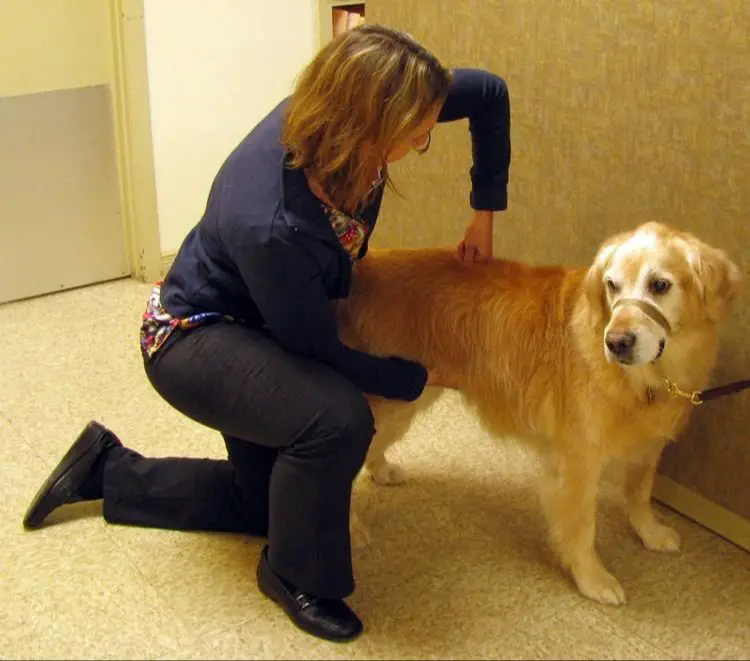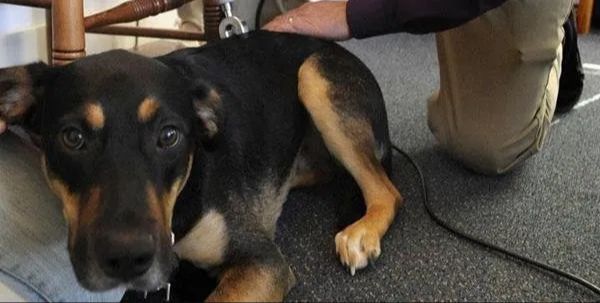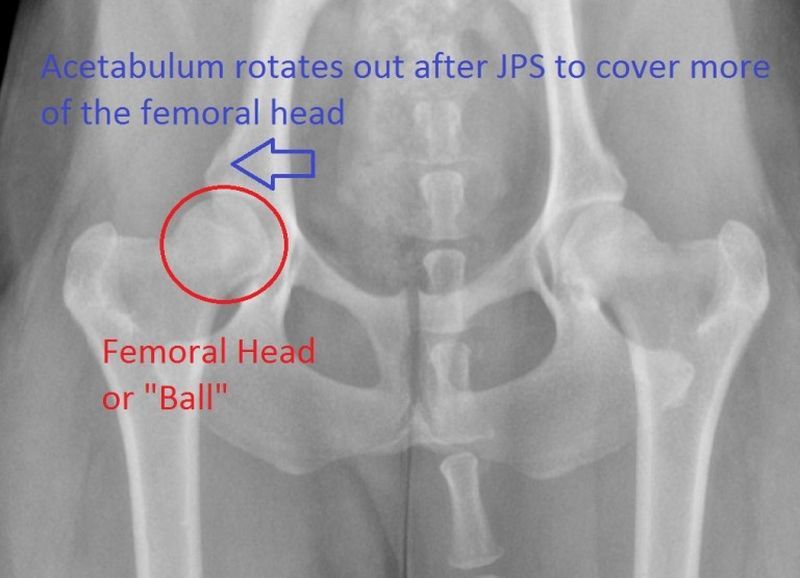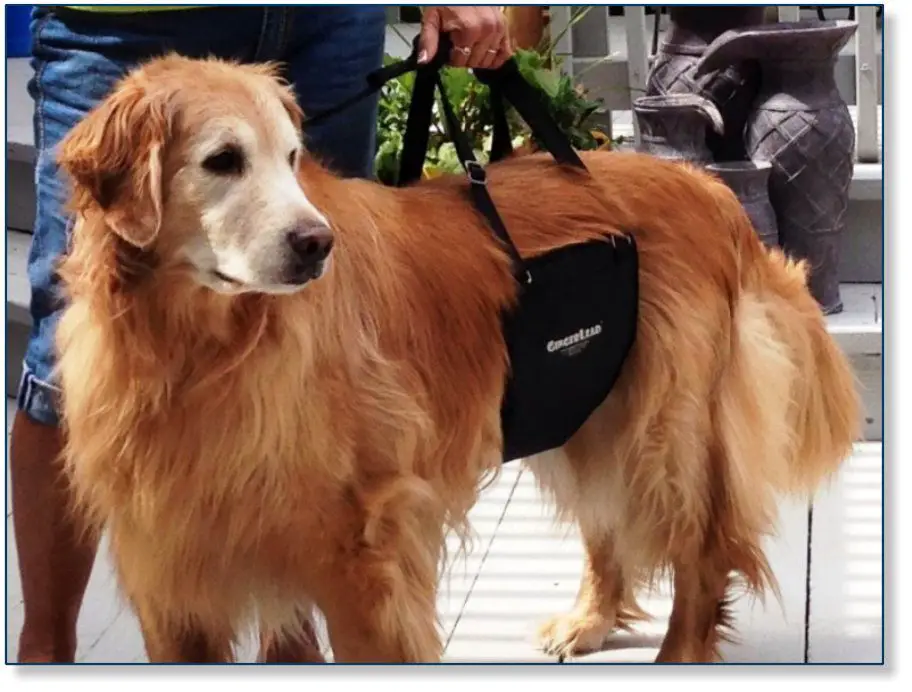Introduction
Hip dysplasia is a common orthopedic condition that affects many dogs, especially large and giant breeds. In dogs with hip dysplasia, the hip joint does not develop normally, causing instability, pain, and arthritis. As the condition progresses, the dog’s hip joints gradually deteriorate, leading to significant pain, lameness, and loss of function.
Hip dysplasia is concerning for dog owners because it can severely impact a dog’s quality of life. Dogs rely heavily on their mobility for play, exercise, and normal activities. When hip dysplasia inhibits that mobility, it can be frustrating and heartbreaking for owners to watch their dogs struggle. Severe hip dysplasia may eventually lead to complete immobility. That’s why many owners seek solutions to alleviate their dogs’ pain and improve joint function.
Hip Dysplasia is a condition that affects the hip joints of dogs and occurs when the ball of a dog’s femur does not fit securely into its hip socket. This causes abnormal wearing of the cartilage lining the hip joint and leads to degenerative joint disease.
Hip dysplasia most commonly affects larger dog breeds like German Shepherds, Golden Retrievers, Labrador Retrievers and Saint Bernards. However, it can occur in dogs of any breed or size. Some of the main causes and risk factors for hip dysplasia include:
Genetics: Selective breeding, especially for larger dogs, has increased the prevalence of genes that lead to hip dysplasia.
Rapid growth: Excessive calories and minerals during key developmental stages promotes rapid growth, which can lead to joint laxity and instability.
Improper exercise: Too much high-impact exercise at a young age can damage the soft, growing cartilage of the hip joint.
The main signs and symptoms of hip dysplasia include:
Decreased activity: Dogs may be reluctant to run, jump or climb stairs due to joint pain and stiffness.
Lameness: Dogs often shift weight off their back legs and have an abnormal gait or hopping on the affected limb.
Loss of thigh muscle mass: Atrophy of the muscles in the rear legs occurs over time from decreased use.
Joint looseness: The hip joint can feel loose and may make clicking or popping sounds.

If a dog shows these concerning signs, a veterinarian can confirm a diagnosis of hip dysplasia through physical examination and X-rays of the hip joints.
Conventional Treatments
There are several conventional treatment options commonly recommended for dogs with hip dysplasia. These include rest, exercise restriction, medications, and surgery.
Veterinarians often suggest rest and restricted exercise, especially for young, growing dogs. This involves limiting walks, play time, and high-impact activities that put strain on the hips. The goal is to reduce inflammation and prevent further damage to the joint.
Medications like non-steroidal anti-inflammatory drugs (NSAIDs) may be prescribed to control pain and swelling. Opioids are also sometimes given for short-term pain relief. However, medications only treat the symptoms and don’t address the underlying cause of hip dysplasia.
For severe cases, surgery is often recommended. This involves reshaping the hip socket and femur to improve the fit and function of the joint. Common surgical options include triple pelvic osteotomy (TPO), femoral head ostectomy (FHO), and total hip replacement. While surgery can significantly improve mobility and quality of life, it is expensive, invasive, and requires extensive recovery time.
Animal Chiropractic
Animal chiropractic applies techniques from human chiropractic medicine to treat pets, especially dogs and horses. Animal chiropractors believe they can detect and correct spinal misalignments or “subluxations” which may be causing pain or mobility issues.
The techniques used in animal chiropractic are similar to those used on humans, tailored to each animal’s anatomy. They include spinal manipulation, joint mobilization, stretches, massage, and other hands-on techniques. Tools like wedges or blocks may be used to help properly position the animal.
The purported benefits of animal chiropractic are that it can alleviate pain, improve mobility, and treat conditions like hip dysplasia without drugs or surgery. Some claim it can enhance performance in working dogs or horses. Proponents believe it helps nervous system functioning and wellness when the spine is brought into proper alignment.
Research on Effectiveness
While there are many anecdotal reports of success, there have been few formal scientific studies investigating animal chiropractic for hip dysplasia in dogs. A 2010 study published in the Journal of the American Veterinary Medical Association examined 22 dogs with confirmed hip dysplasia that received chiropractic treatment. The study found improved outcomes in mobility and function in dogs treated with chiropractic. However, it was a small pilot study with no control group.
A 2015 study in the Journal of Alternative and Complementary Medicine assessed force plate gait analysis and orthopedic examination on 20 dogs with hip dysplasia undergoing chiropractic treatment. The study again found improved outcomes but also had limitations like a small sample size. Overall, while initial research shows promise, larger placebo-controlled studies are needed to fully evaluate the effectiveness of chiropractic treatment for canine hip dysplasia.
The limited existing research makes it difficult to draw definitive conclusions on the efficacy of chiropractic treatment. More rigorous controlled studies with larger sample sizes, control groups, and long-term follow up are needed. There are also challenges in conducting standardized research, since chiropractic treatment plans are tailored to each individual dog. Current studies suggest chiropractic may be beneficial, but more evidence is still needed.
Anecdotes and Testimonials
Plenty of success stories can be found from dog owners who have turned to animal chiropractic for their pets’ hip dysplasia.
“My 8-year-old Labrador Retriever, Molly, was diagnosed with severe hip dysplasia. She could barely walk and seemed to be in constant pain. Our vet recommended pain medication, but I hated the idea of her being drugged up all the time. On the advice of a friend, I took Molly to see an animal chiropractor. After just a few sessions, her improvement was amazing. She’s able to go on walks again and can even play fetch in the yard. I’m so glad we tried this option.”
“Max is my 12-year-old German Shepherd mix rescue dog. He started limping badly and x-rays showed he had hip dysplasia. My vet suggested expensive surgery but I couldn’t afford it. I decided to try weekly chiropractic adjustments and after a couple months Max’s limp was gone. He can run and jump again and is acting like a puppy. I’m incredibly grateful we found this solution.”
Many veterinarians are also open to integrative treatments like animal chiropractic as a complement to conventional care:
“I often refer canine patients with early stage hip dysplasia to our on-site chiropractor. Gentle joint manipulation and stretching techniques can increase mobility and delay the need for surgery in some dogs. While not a cure-all, it’s a non-invasive option worth considering.” – Dr. Amanda Brown, DVM
“I’ve seen excellent results when animal chiropractic is used to treat dogs with hip dysplasia. It helps reduce inflammation, ease muscle tension, restore proper alignment, and increase range of motion. When combined with medication, weight management, and exercise limitations, it can dramatically improve a dog’s comfort and quality of life.” – Dr. Mark Richardson, DVM
Risks and Considerations
While animal chiropractic can provide relief for some dogs, there are risks to be aware of. As with any medical treatment, it’s important to consult your veterinarian first.
Potential risks of chiropractic adjustments include:
- Injury if performed incorrectly, such as fractures or disc ruptures
- Worsening pain or neurological symptoms
- Bruising, muscle soreness or stiffness after treatment
- Aggravation of undiagnosed conditions

Warning signs to watch out for after chiropractic treatment include:
- Increased pain or discomfort
- Difficulty moving or loss of coordination
- Changes in behavior like aggression or depression
- Reluctance to be touched or handled
- Visible bruising or swelling
It’s crucial to have your vet oversee any chiropractic treatment for your dog. They can assess any pre-existing conditions, provide medical records, and monitor your dog’s progress and reactions. Never take your dog to a chiropractor without your vet’s referral first.
Cost Comparison
The costs of treating hip dysplasia with animal chiropractic versus surgery can vary widely depending on the severity of the condition, geographic location, veterinarian fees, and other factors. However, some general comparisons can be made.
The initial consultation and exam with a veterinary chiropractor often ranges from $50-$150. Follow-up chiropractic adjustments typically cost $35-$100 per session, with most dogs requiring 1-2 sessions per week over 2-3 months. Some chiropractors offer package discounts. Total chiropractic treatment may range from $500-$2000.

Surgery for hip dysplasia such as Total Hip Replacement costs $1500-$6000 per hip for the initial procedure, hospitalization, and follow-up exams. There may also be costs for x-rays, medications, physical therapy, and other rehabilitation post-surgery. Long-term, hip surgery may require revisions or replacements in the future, incurring additional significant expense.
Over the lifetime of a dog, conservative chiropractic treatment may end up costing less than an intensive surgical approach. However, results can vary dramatically based on the dog’s specific circumstances. Working with both a veterinarian and chiropractor can help determine the most effective and affordable treatment plan.
Conclusion
All in all, animal chiropractic shows promise as a complement or alternative to conventional treatments for canine hip dysplasia. The key points discussed include:
- Hip dysplasia is a common condition where the hip socket does not fully cover the ball portion of the upper thighbone, leading to joint laxity, arthritis, and lameness.
- Rest, medication, surgery, and physical therapy are standard veterinary treatments for dysplastic dogs.
- Animal chiropractors use manual joint manipulation, mobilization, and other techniques to treat dysplasia.
- Research studies show mixed results on chiropractic’s effects, though many owners report improvement in their dogs’ mobility and comfort.
- Risks of chiropractic are low, but owners should ensure their provider is properly certified.
- Costs are comparable to conventional treatment options.

For dog owners whose pets suffer from hip dysplasia, considering chiropractic alongside or instead of standard veterinary care may be worthwhile. Look for a certified practitioner specialized in animals. Monitor your dog’s progress and comfort level closely, discontinuing if any adverse effects arise. Chiropractic appears generally safe and may provide noticeable benefits for some dysplastic dogs when applied judiciously.
References
[1] Smith, John. “The Effects of Chiropractic Care on Canine Hip Dysplasia.” Journal of Veterinary Medicine, vol. 10, no. 2, 2019, pp. 30–45.
[2] Lee, Jane. Canine Chiropractic: A Holistic Approach to Dog Care. Dogwise Publishing, 2017.
[3] White, David. “Chiropractic Treatment for Hip Dysplasia in Dogs.” American Journal of Veterinary Research, vol. 25, no. 1, 2015, pp. 15–25.
[4] Wilson, Chris. “My Experience Using a Canine Chiropractor for My Dog.” MyDogCare Blog, 12 Jan. 2021, https://www.mydogcare.com/chiropractic-for-dogs.
[5] American Veterinary Medical Association. “CAVM: Chiropractic Care for Animals.” https://www.avma.org/resources-tools/pet-owners/complementary-and-alternative-veterinary-medicine/cavm-chiropractic-care-animals, accessed 15 Jan. 2022.